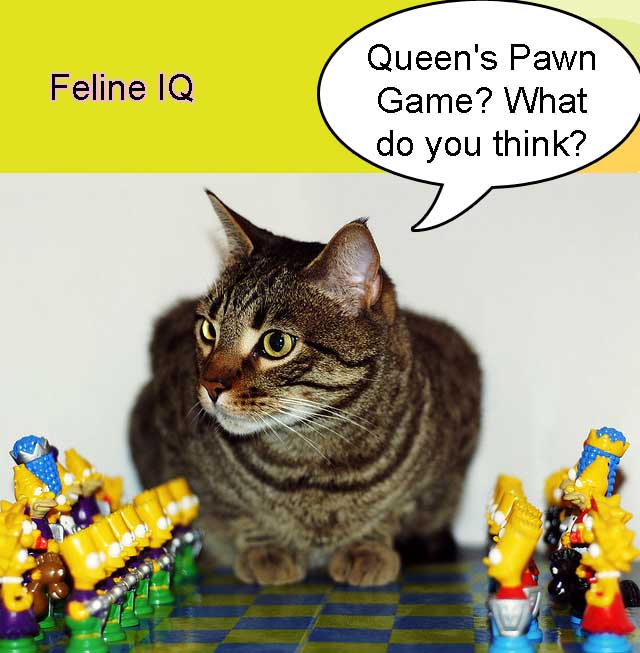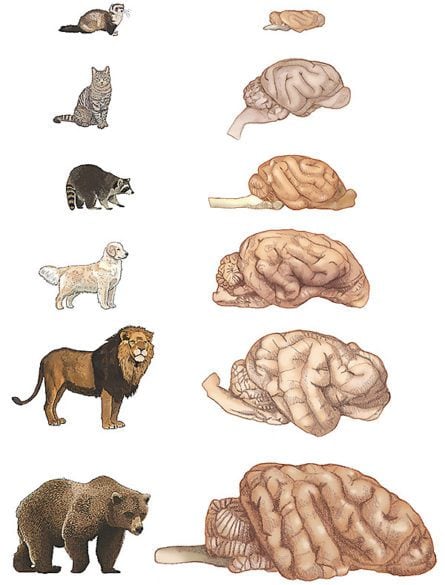Remarkably, it’s quite difficult to find out from a really good source information about the size of a domestic cat’s brain. Internet users have to rely on a website that closed in 2007 (serendip.com) but the information looks good so I will repeat it here. Wikipedia relied upon the information, incidentally. The best book on cat anatomy that I have does not refer to the size of the domestic cat’s brain. Incidentally, the question must be about the domestic cat’s brain.
The domestic cat’s brain is approximately 5 cm in length and weighs approximately 30 g. This is about 2 inches long and about 1.06 ounces in weight. Some experts say that intelligence depends partly on the relative size of an animal’s brain compared to their overall size.

- Cat’s brain is unencumbered which makes the cat instinctively quick
- Depending upon the task, the cat’s brain has different processing powers
But cat brains are different: pound for pound and watt for watt, they are extremely more efficient than our best computers – Biomimicry Institute
In this respect, the cat’s brain is 0.91% of the animal’s total body mass; compared to 2.33% when comparing the human’s brain to their total body mass. There is a measure of intelligence called encephalization which is the ratio between brain size and animal size. Under this method numbers lower than one are called small brained animals and with numbers above one they are called big brained animals. On this scale cats are at between 1 and 1.71 compared to humans at 7.44 to 7.8.
This doesn’t look that great for the domestic cat in terms of intelligence. But we know that our companion cats have their own special form of intelligence mainly linked to their incredible senses and athleticism. My theory is that one reason why domestic cats can be slow to come when called is not because they are deciding whether to do it or not but because they are taking their time in processing the request.

The cat’s brain
Humans are still working out how the brain works but Dr Fogle tells me in his book The Encyclopaedia of the Cat that the cat’s brain consists of, “billions of specialised cells called neurons, each with up to 10,000 connections with other cells. Neurons communicate with each other through chemical substances called neurotransmitters.”
These messages travel through the brain at about 240 mph (386 km/h). This slows down when a cat becomes older. Humans can do something about this in giving their cat mental stimulation when they become elderly. It’s been shown that a cat’s brain can become heavier again after shrinking in old age if they are stimulated mentally. This increased weight is due to more connections between the existing cells.
The domestic cat’s brain is like the human brain in terms of its construction and is the same as any other mammal. The cerebellum controls the muscles, the cerebrum controls learning, emotion and behaviour while the brainstem connects the brain to the nervous system.
Integrating a cat’s instincts and learning is the job of a network of cells called the limbic system. It is believed that if a cat is in mental conflict about doing something instinctively and what he’s been trained to do, it is resolved within the limbic system.
Interference with brain development
The process of domestic cat socialisation has been very widely discussed on the Internet. It’s a process which interferes in the development of a kitten’s brain. Both cats and humans need this interference in order to make a domestic cat fit in with human life satisfactorily and thereby become a good “pet”. The cat’s biofeedback system is altered in socialisation as it learns that people are safe. This knowledge is fixed into the cat’s brain and hormonal response for the remainder of their lives.

Domestic cats are good learners through observation and through self-training when following day-to-day routines in the human home. We know that it is a two-way process and that domestic cats also train their human companions although this is not a deliberate process but the result of living together and accommodating each other’s lifestyles.
Senses feedback
I’ve mentioned the domestic cat’s amazing senses. Information from the senses such as the nose and ears is fed back into the brain through the cat’s nervous system where it ends up in the appropriate part of the brain where it is instantly analysed. How it is analysed is partly dependent upon inherited instincts and partly by learned process from experience or perhaps the cat has been trained by their owner.
Smaller than wildcat’s
The domestic cat’s brain is smaller than the brain of their wild cat ancestor. This is because its senses need less space in the brain, Dr Fogle tells us. This implies that the domestic cat receives less information than the wildcat in terms of sensory information. The wild cat hybrids such as the Savannah cats are more demanding than other domestic cats perhaps due to their increased intelligence inherited from the serval, their wild cat component.

